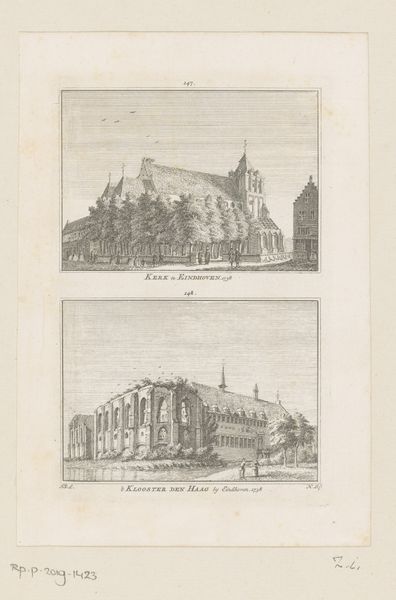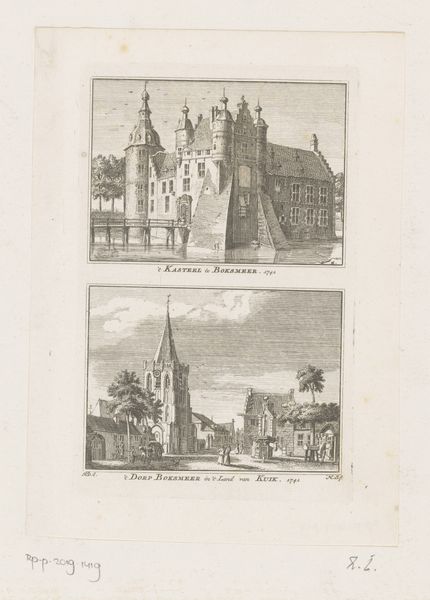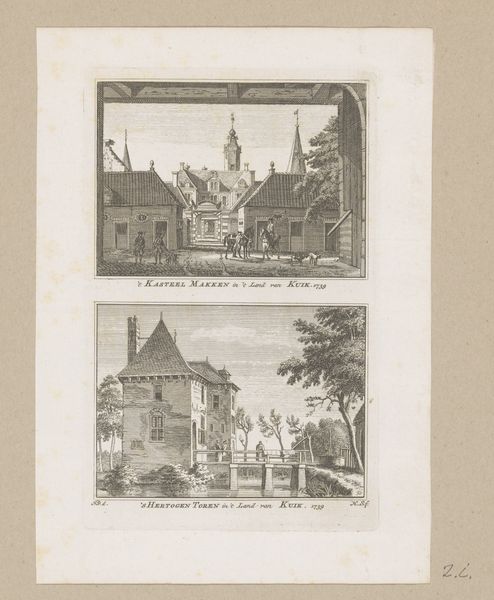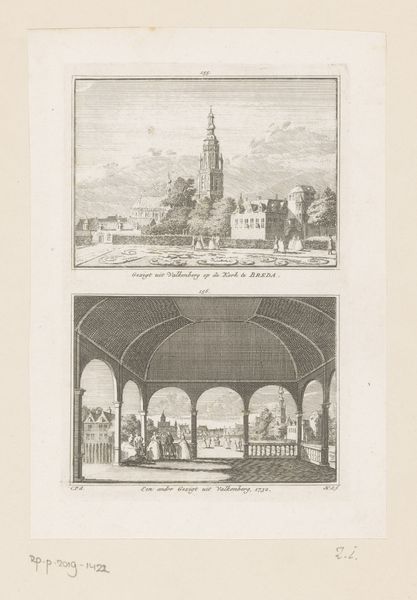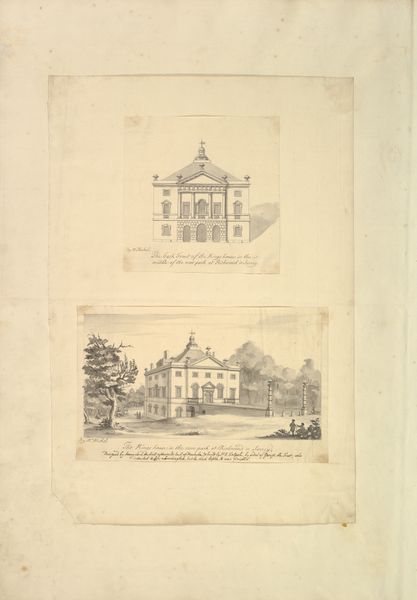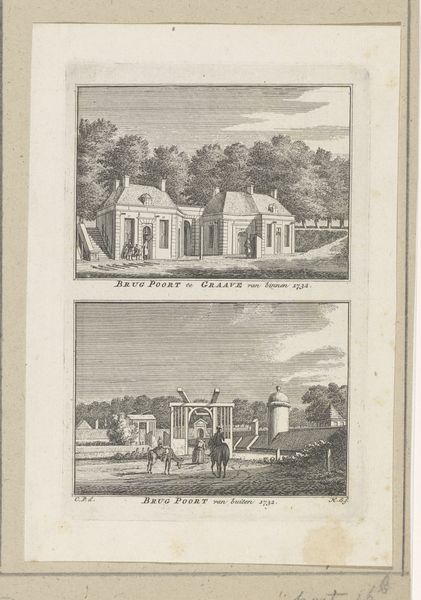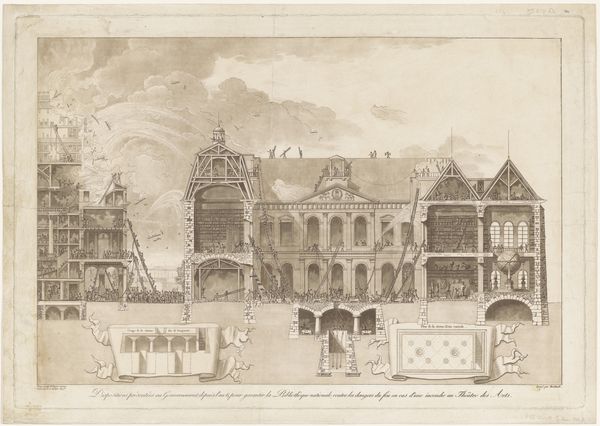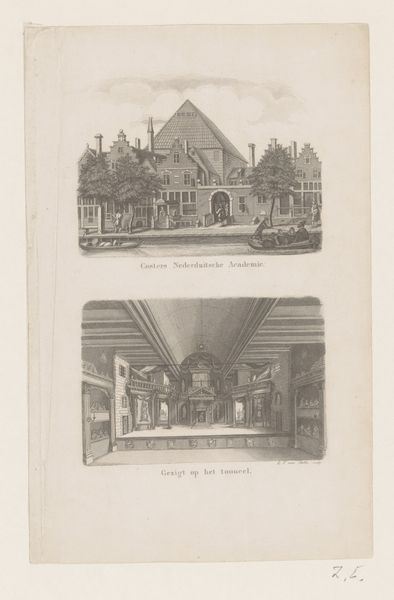
Dimensions: height 250 mm, width 170 mm
Copyright: Rijks Museum: Open Domain
Curator: This print by Carel Christiaan Antony Last, titled "Three Views of the Coster Festival, 1856," offers a fascinating glimpse into a celebration of Laurens Janszoon Coster, whom Haarlem credits with inventing printing with movable type. It's a meticulously rendered piece, combining etching and pencil drawing, reflecting both realism and touches of Romanticism. Editor: My first thought? Delightful! It’s like stumbling upon a miniature, three-tiered world. The detail crammed into these scenes is amazing—the flags, the buildings… it feels both historically precise and joyously celebratory. Like peering into someone's meticulously kept memory. Curator: Exactly. The print reveals the importance of public spectacle in 19th-century Dutch society. The Coster Festival was a carefully constructed event, designed to solidify Haarlem's identity and celebrate national pride through the lens of cultural achievement and history. This imagery helped shape public perception. Editor: It makes me wonder, though, about this invented history. How much of the popular belief about Coster as the printing pioneer was shaped by such events, and how much by actual evidence? It's the power of myth-making in visual form, isn't it? A carefully crafted narrative taking precedence. Curator: Absolutely. This imagery functioned as a kind of propaganda, solidifying Haarlem’s cultural standing. The bottom view, displaying the decorated printing press, is almost like a sacred relic on wheels, participating in its own parade. The choice of Romanticism and realism side by side amplifies the reverence but in an accessible way. Editor: And notice how, despite the celebration, there's a distinct quietness to the scenes. They feel observed rather than actively participatory, capturing that sense of slightly removed historical witness. Maybe it’s because the tones are quite gentle, using a very limited palette. There's something sweetly melancholic about the image. Curator: It reflects a curated history—an idealized vision meant to inspire a certain kind of patriotism. And to consider this today prompts one to think critically about constructed history versus objective truth, doesn't it? Editor: Precisely! It’s a lovely reminder that even the seemingly objective documents can be incredibly persuasive. Thanks to Last, these charming snapshots of a crafted reality provide a timeless invitation for analysis and contemplation.
Comments
No comments
Be the first to comment and join the conversation on the ultimate creative platform.
